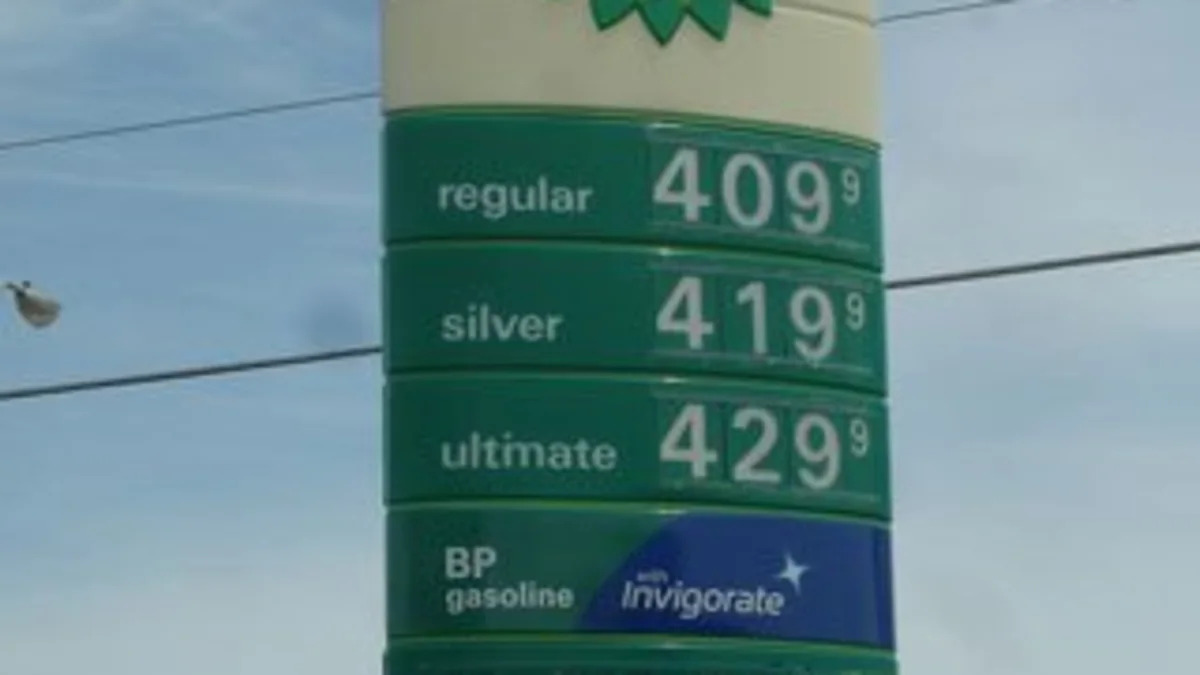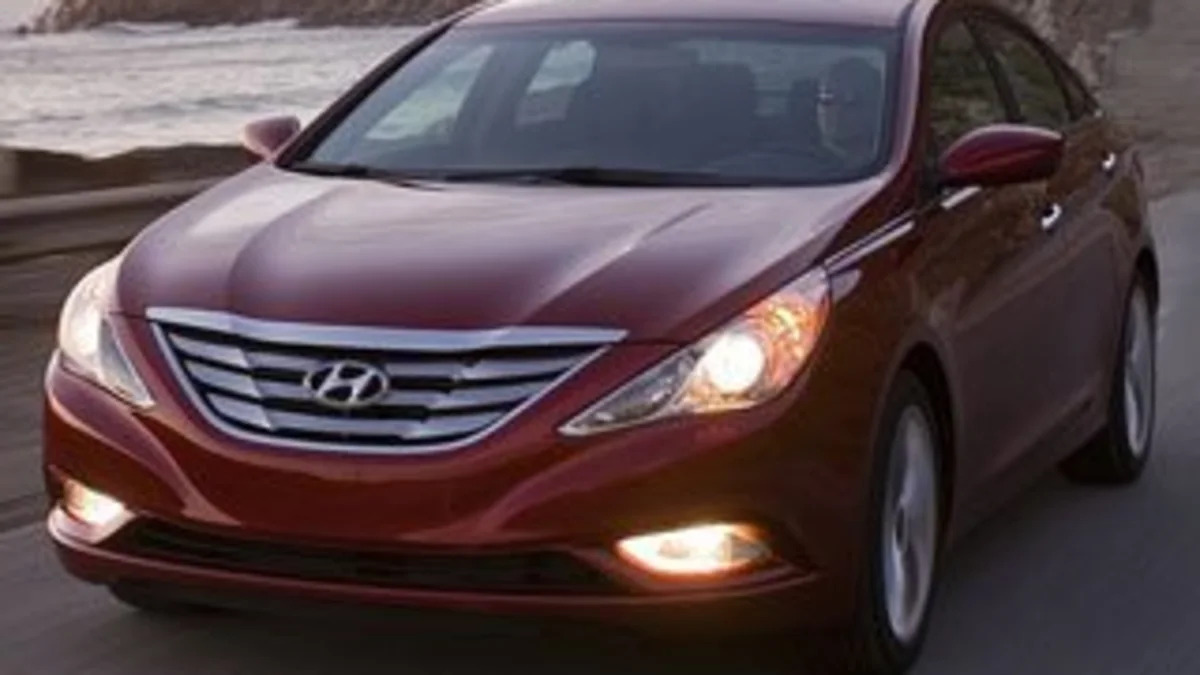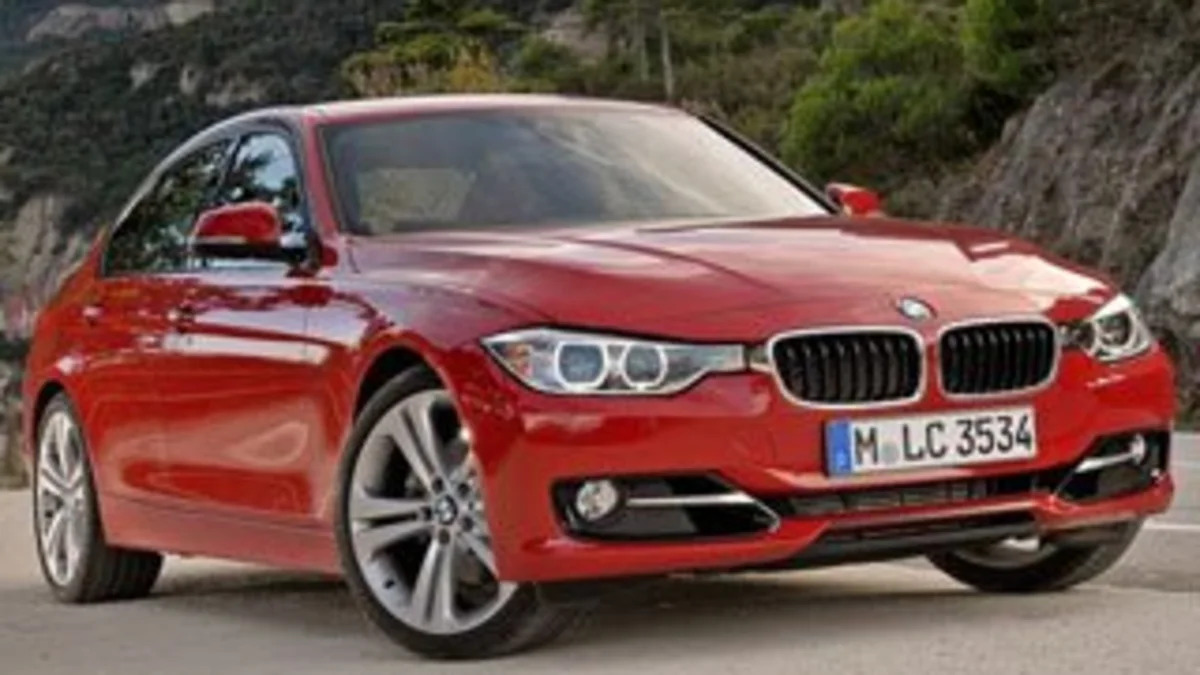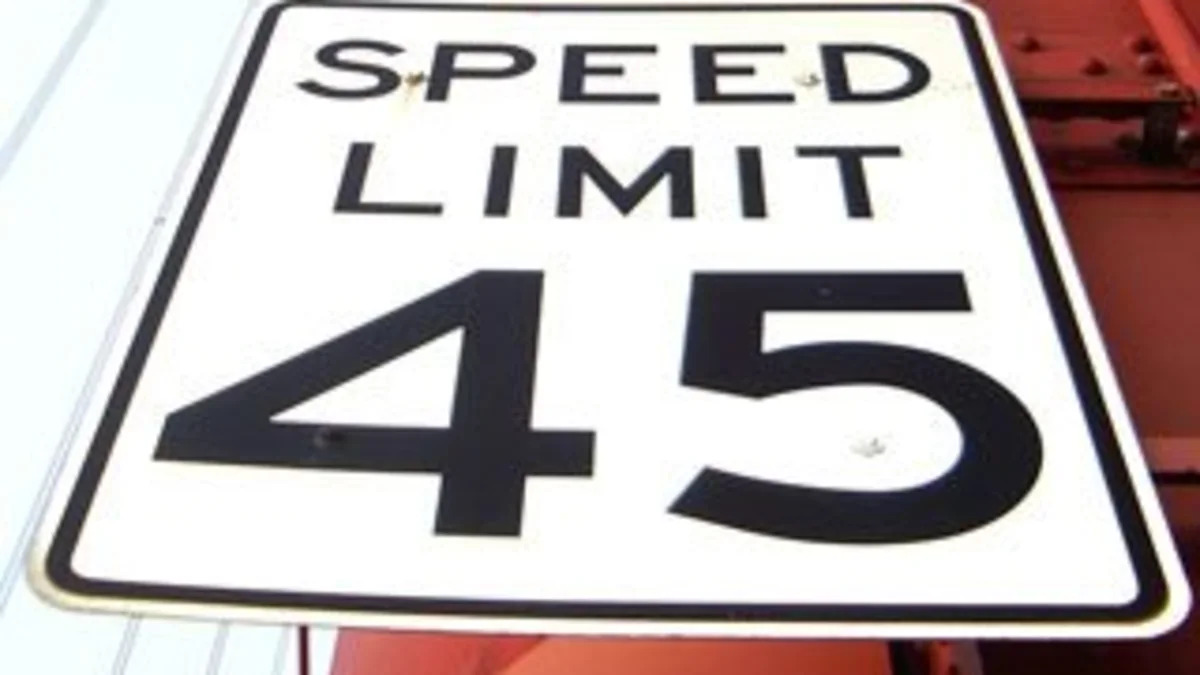Changes You Can Make Now To Save Money On Gas

-

- Image Credit: Shes Not There, Flickr
Spring always brings higher gas prices, especially as refiners switch from winter to summer formulations. But just as warm weather is hitting the Snow Belt early in 2012, high gas prices have gotten here ahead of schedule too. According to AAA’s Daily Fuel Gauge Report, the national average price of unleaded regular started the week at $3.80 per gallon, some 20 cents higher than at this time last year. Gas has not been this expensive since May 2011, and four states have already hit $4/gallon average price. Several more are within a dime, and are likely to soon cross that threshold.
When gas prices trip that psychological trigger, consumers tend start reevaluating their behavior and looking for ways to save on fuel costs. Here are five ideas for how you can combat high gas prices, now and into the future. -
- Image Credit: Hyundai
1. Trade In And Trade Up
While many drivers would love to trade in their current vehicle for something that gets better fuel economy, it usually doesn’t make a lot of financial sense. You absolutely must do the math to figure out how much you could potentially save, given that you’ll be spending tens of thousands of dollars on a new vehicle.
For instance, let’s say you’re driving a 2008 Toyota Camry V6 that gets 22 miles per gallon combined. You’ve got your eye on a new 2012 Hyundai Sonata, which averages 28. Using a 12,000-mile annual average and assuming gas prices stay high at $4.00/gal, the most you’re going to save is about $467 a year. Considering that you’re likely really close to paying off that Camry, if you haven’t already, it’s probably best to keep it and look forward to all the extra cash you’ll have to spend on gas when you don’t have a car payment.
Research the Hyundai Sonata
Hyundai Sonata Photos & Information
Hyundai Sonata Specs
Hyundai Sonata Local Dealer Price Quote -
- Image Credit: BMW
But what if your car is much older? That’s when it makes more sense to go ahead and trade it in on a new model, and start plowing your savings on fuel and maintenance costs into your new monthly payment. For instance, my wife’s BMW 3-Series is now 11 years old. While there’s nothing wrong with it today, for the last year or two we’ve begun to see our repair costs go up and it seems like most visits to the dealer rapidly escalate into the four-digit territory. We’re already thinking about buying a new car to replace it, so the fuel savings would really just be icing on the cake.
The 2001 BMW 325i is rated at just 20 mpg combined, while a new 2012 328i returns 28 mpg. That works out to $685 in savings annually. But what if she had a high-mileage commute, and was putting on 50% more miles? Now the gas savings add up to over $1,000, which is like getting a nice fat incentive check from the manufacturer, every year.
Research the BMW 3 Series
BMW 3 Series Photos & Information
BMW 3 Series Specs
BMW 3 Series Local Dealer Price Quote -
- Image Credit: GM
2. Trade In And Trade Down
Now you can see from the first two examples that despite some dramatic improvements in fuel economy over the past few years, fuel economy alone doesn’t usually provide enough financial incentive to trade in the perfectly good car you already own on a new one. But what if you have the ability to trade down a size? Or better yet, two sizes?
We’ve seen lots of Americans already embracing the notion of driving smaller over the past few years, whether out of financial necessity or just growing tired of piloting a truck on an everyday basis. One of the best swaps around is going from a midsize SUV to a midsize sedan, which doesn’t sacrifice much in the way of day-to-day utility. Do the math on trading in a 2008 Chevrolet Trailblazer (16 mpg combined) on a 2013 Chevrolet Malibu eAssist (29 mpg combined), and you’ll see that the gas savings amount to almost $1,350 per year, meaning that every month you’d have an extra $112 you were spending on gas to put towards your new car payment.
Research the Chevrolet Malibu
Chevrolet Malibu Photos & Information
Chevrolet Malibu Specs
Chevrolet Malibu Local Dealer Price Quote -
- Image Credit: Fiat
But what about some really radical downsizing, like moving out of a 4WD 2006 Dodge Ram pickup and into a 2012 Fiat 500? What if we told you that you could pay for the entire four-year lease on the little Fiat, just on gas savings? That’s right, the miserable 12-mpg combined of the Flexfuel 4.7-liter V8 in the Dodge truck has such a wide delta compared to the Fiat mini’s 33 mpg combined that you could pay the special $199/month lease price on the 500 with your gas savings, $2,545 annually. You’d even have twelve dollars and change left over, every single month, and you’d still have the pickup truck sitting around for those times you need to move a sofa.
Research the Fiat 500
Fiat 500 Photos & Information
Fiat 500 Specs
Fiat 500 Local Dealer Price Quote -
- Image Credit: Toyota
3. Go "Electric"
Not everyone is going to be able to drive a new car for “free,” because most people are not driving a vehicle that’s as inefficient as a V8-powered, four-wheel-drive pickup. But anyone can achieve similar sorts of dramatic fuel economy improvements by buying a car that uses electric drive. The gateway to this world of batteries is, of course, the hybrid – and there’s no better-selling model than the Toyota Prius.
Toyota has a new, smaller, and less expensive Prius on the market this year, the Prius C, which matches it’s older sibling’s 50 mpg combined. Downsize your 2007 Lexus RX 350 into a Prius or a Prius C and you’ll add 30 mpg’s to your combined total, for a combined annual savings of $1,440.
Research the Toyota Prius C
Toyota Prius C & Information
Toyota Prius C Specs
Toyota Prius C Local Dealer Price Quote -
- Image Credit: Nissan
But even driving a Prius, you’re still going to the gas pump and your gas expenses, while shrinking, are not going away. There is a way to make gas a thing of the past, however, and that’s to embrace a full electric, like the Nissan Leaf. The Leaf has a range of up to 100 miles, and can be recharged in about 7 hours from the same 220V power outlet that your clothes dryer is plugged into. If you’re like most Americans, owning a Leaf as a second car would allow you to entirely eliminate gasoline from your daily commuting – and drop your cost below the price of a latte. Nissan says a full charge costs about $2.40, based on the average cost of electricity in the U.S.
But as attractive as is the notion of kissing gasoline goodbye, we’re willing to admit that an electric car – even as a second car – doesn’t work for all but the most enthusiastic of early adopters. And that’s pretty much why General Motors developed the Chevy Volt. The Volt only has an electric range of about 30-35 miles, which is still far enough that many people could use it strictly as an electric car during their weekly commuting. But the Volt also has a gasoline-powered engine in it. So when you run out of juice in the Volt, it automatically switches on the gas engine and the car suffers no degradation in performance. Then you can just recharge it when you get back home. It’s the perfect way to try out the electric lifestyle, without any of the worries about adapting your vehicular needs to the range of your battery pack.
Research the Nissan LEAF
Nissan LEAF & Information
Nissan LEAF Specs
Nissan LEAF Local Dealer Price Quote -
- Image Credit: Shoops2011, Flickr
4. Drive Slower (And Smarter)
So what if a new car is not in the works. Certainly, this is the situation most people are going to find themselves in, and frankly, buying a new car is probably the last thing you should do to trim your gas budget.
The first thing you can do is to change the way you drive. We all know it, but it bears repeating: Driving slower really does save fuel. And we’re talking about both rapid acceleration and top speed here, as being heavy on the throttle isn’t the only way to unnecessarily waste gas. Once you get going faster than 60-65 miles per hour on the freeway, you’re trading a few minutes earlier arrival for a few percent fewer miles per tank. -
- Image Credit: Mr. T in DC, Flickr
There are other smart ways you can change your driving habits. Many newer cars have “Eco” modes or lights that can help coach you to more efficient driving – use them. Even if your car doesn’t have this technology, watch the tachometer as you accelerate and try not to allow the engine to rev higher than 3,000 rpms. People who “hypermile” are adept at getting maximum fuel efficiency out of any vehicle, and they drive as if there is an egg between their right foot and the accelerator.
Try to get more organized, combining your shopping and errands into fewer, longer trips. Your car is more efficient when it’s warmed up, so especially in the winter, try to avoid those drives down to the corner store to pick up some missing ingredient for dinner. Get rid of all the extra junk that can accumulate in the trunk or hatchback area of your vehicle, as hauling around all that extra weight all the time uses fuel. -
- Image Credit: swanksalot, Flickr
5. Drive Less
Here’s a radical idea for saving money on gas: Stop driving. Yes, we know it’s anathema to the American lifestyle, but frankly, that lifestyle is proving more and more unsustainable. With more than one-third of U.S. adults and 17 percent of children and teenagers now classified as obese by the Centers for Disease Control and Prevention, there’s no better time for people to take to the streets, on foot or on bicycles.
While it’s convenient to hop in the car every time you want to go anywhere, figuring out how to get someplace under your own power is undoubtedly healthier. Many employers have programs to reimburse people for bicycle commuting costs, providing extra financial incentive. Even if your walking or riding is just a part of the distance you need to travel, and the rest is accomplished on public transportation, you’ve still taken a slice out of your monthly gasoline bill and done something good for your body. -









